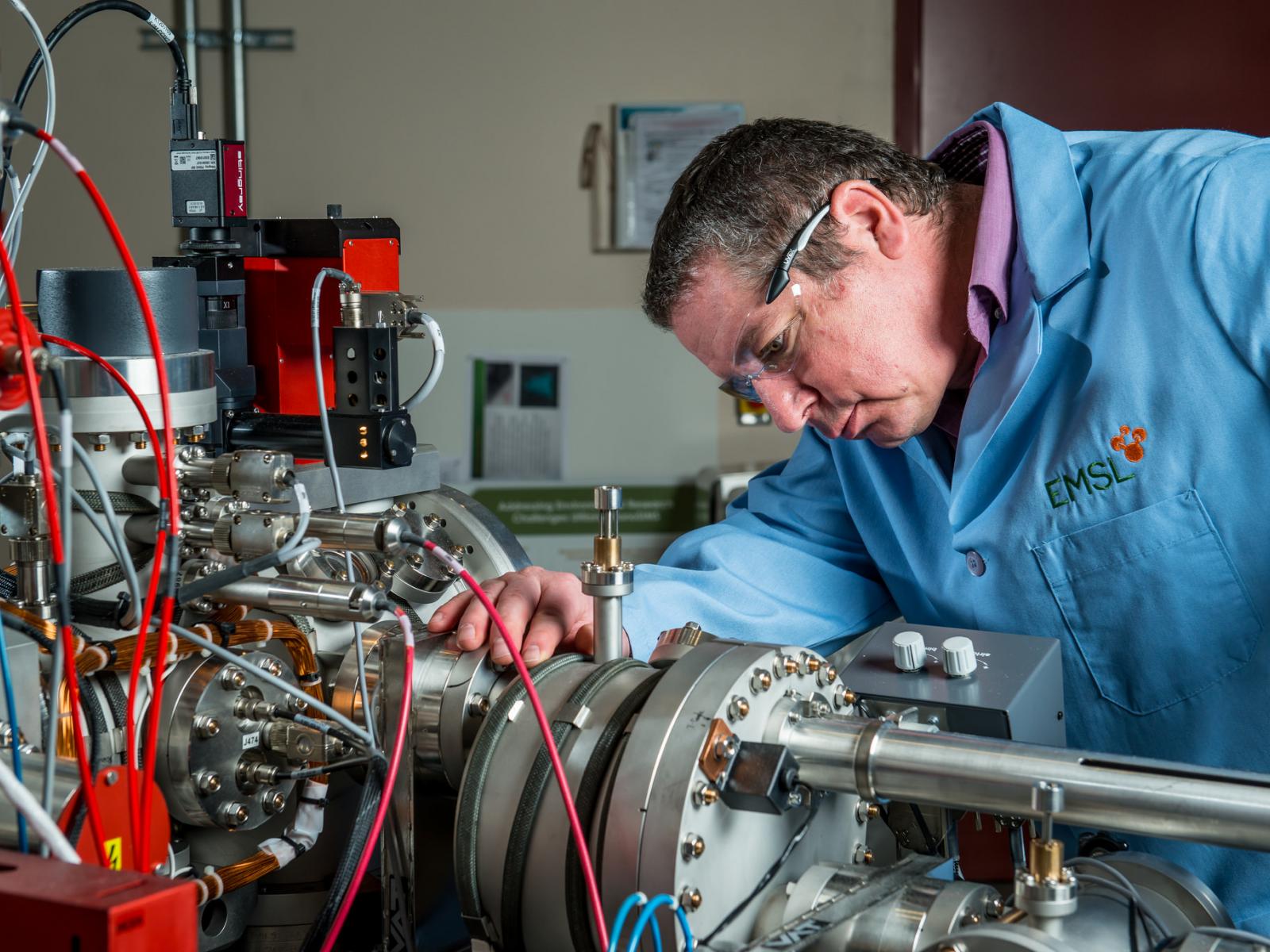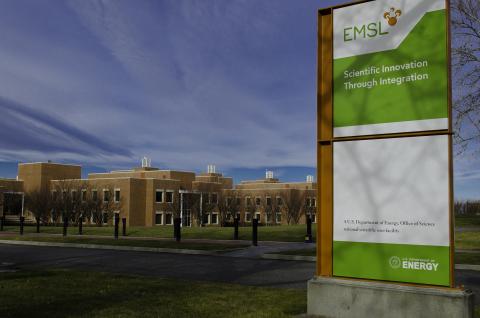EMSL Has Expanded Far Beyond Original Focus 20 Years Ago

John Cliff, a Pacific Northwest National Laboratory scientist, operates a nanoSIMS instrument used for studies in atmospheric science, biology, chemistry, materials science and nanoparticulates.
(Photo by Pacific Northwest National Laboratory)
Earlier this month, we celebrated the 20th anniversary of EMSL, the Environmental Molecular Sciences Laboratory, a Department of Energy Office of Science User Facility.
Pacific Northwest National Laboratory has the privilege of managing and operating this fantastic facility on our Richland campus. About 150 of our scientists provide expertise, collaboration and leadership to the nearly 700 researchers who come from industry, academia and other laboratories each year to take advantage of EMSL's world-leading capabilities.

These researchers—representing more than 40 countries and nearly every state in the nation—compete for access to EMSL's unique instrumentation, supercomputing resources and resident experts. They perform research in a variety of fields to advance our understanding of fundamental physical and biological processes in areas of importance to DOE.
Collectively, they have authored more than 6,000 scientific papers that have been cited more than 200,000 times as researchers build on each other's work.
When one of my predecessors, the late PNNL director William R. Wiley, proposed the concept for EMSL, he envisioned how it would enable researchers to explore connections between the physical, mathematical and life sciences at the molecular scale. Its early focus was on environmental issues relevant to Hanford, such as the fate and transport of contaminants beneath the surface. EMSL still plays a critical role in Hanford cleanup, but its reach now extends to atmospheric processes, biofuels and bioproducts, microbiology and life sciences, catalysis, energy storage and more.
One of EMSL's most well-known contributions to the scientific community is an open source computational chemistry software package called NWChem. This software enables accurate simulation of complex molecular systems and can be used to investigate chemical processes such as photosynthesis, aerosol formation and catalysis.

Among the most widely used chemistry codes in the world, NWChem has been downloaded more than 70,000 times since 2010. Today it runs on computers ranging from scientific workstations to supercomputers—and with help from PNNL computer scientists, it will be ready to run on the exascale computers under development.
EMSL research has advanced subsurface science, building an understanding of the processes that happen underground and contributing new knowledge for cleanup challenges at sites like Hanford. For example, EMSL collaborations have explored how microbes can transform and store radioactive waste and heavy metals in soils and deep sediments.
Looking for potential biofuel production methods, scientists at EMSL also produced the first whole organism computer model of cyanobacteria. The model predicts which of the organism's genes are responsible for capturing energy from sunlight and may eventually allow us to mimic this natural process for cost-effective energy production.
EMSL's specialized instruments—some available at only a few locations around the world—offer new views into scientific challenges. For example, EMSL collaborators have used nuclear magnetic resonance spectrometers to reveal novel structures in more than 100 proteins, from microorganisms to plants and humans. This research is part of the Worldwide Protein Data Bank accessed by scientists around the world.
As leaders in developing and using new ways to look at whole proteins in live cells, EMSL scientists are learning how proteins behave in real time. These developments may help solve how protein structures contribute to infectious disease and could ultimately lead to the vaccines or treatments of the future.
Going forward, EMSL will continue attracting the world's best researchers interested in using its cutting-edge instruments to solve previously intractable problems. These collaborators will advance our understanding of ecosystems above and below ground, and build new knowledge about the inner workings of plants, microbes and systems important for the production of biofuels and bioproducts. And while I may not be the one speaking at this facility's golden anniversary, I can only imagine how great its impact will be by then.
Steven Ashby, director of Pacific Northwest National Laboratory, writes this column monthly. To read previous Director's Columns, visit pnnl.gov/news and filter by Director's Columns in our Latest Stories.
Published: August 20, 2017